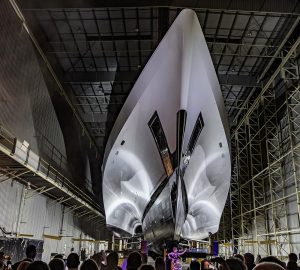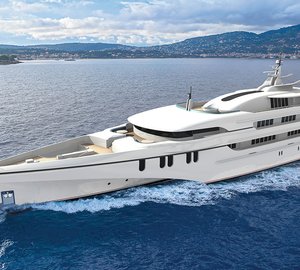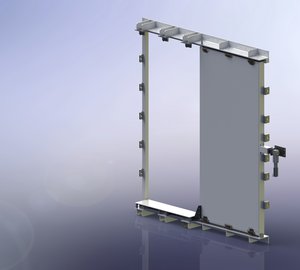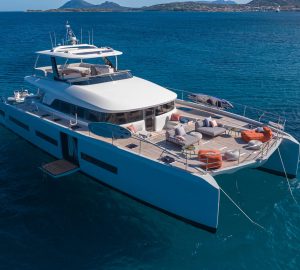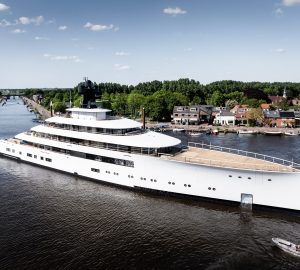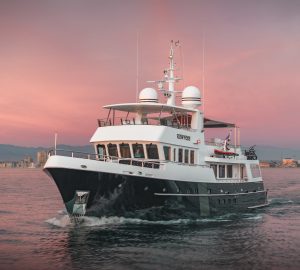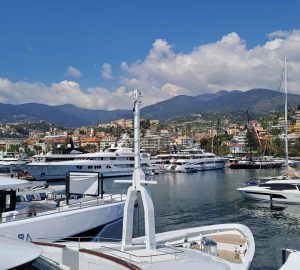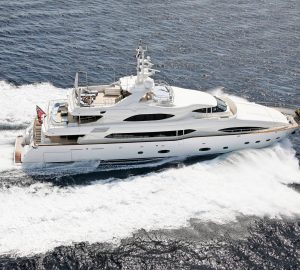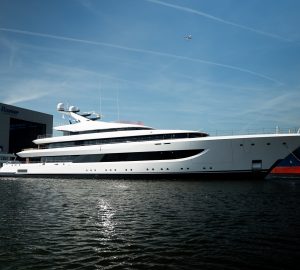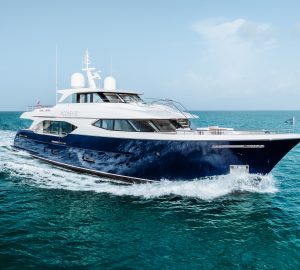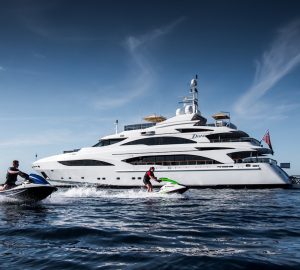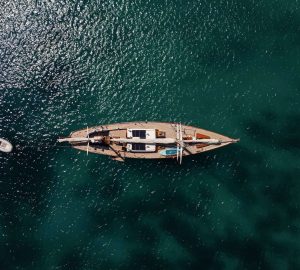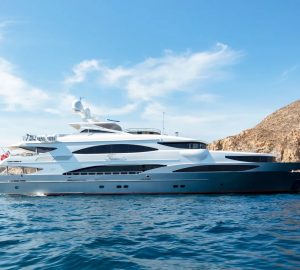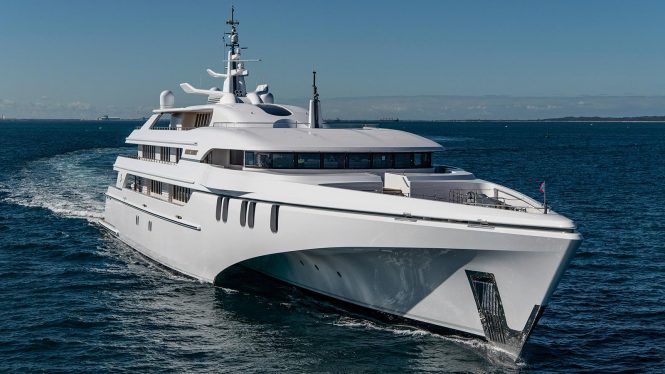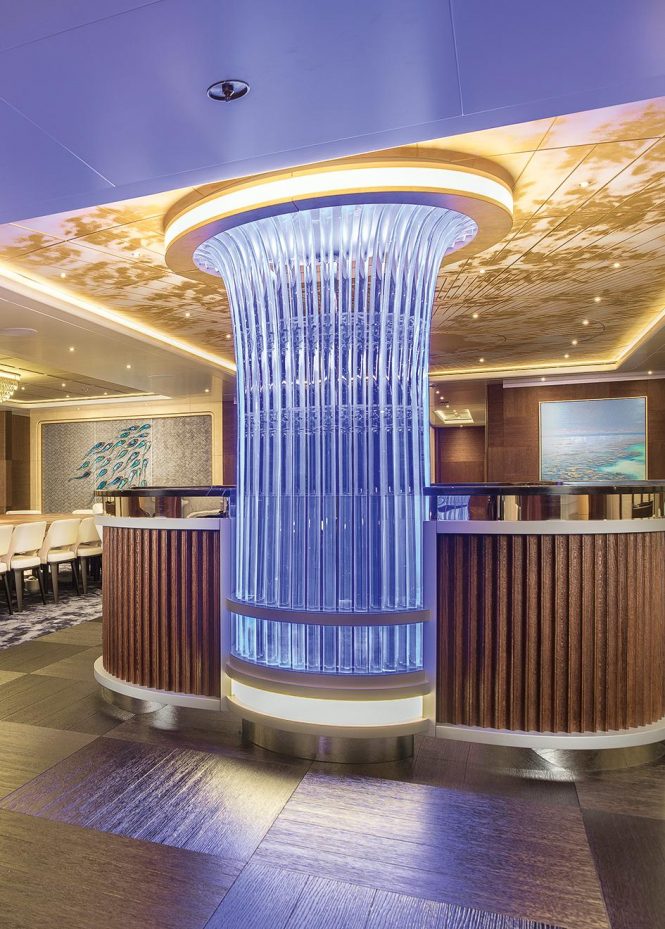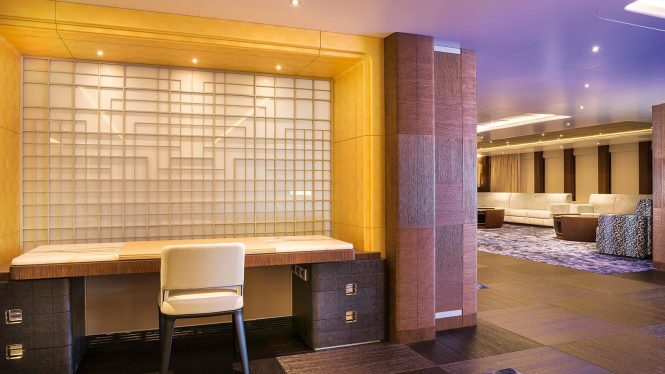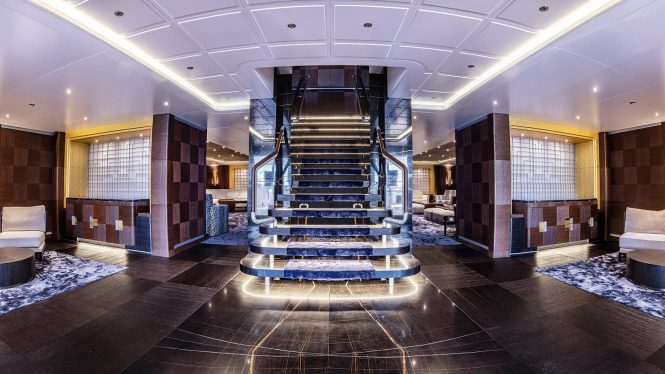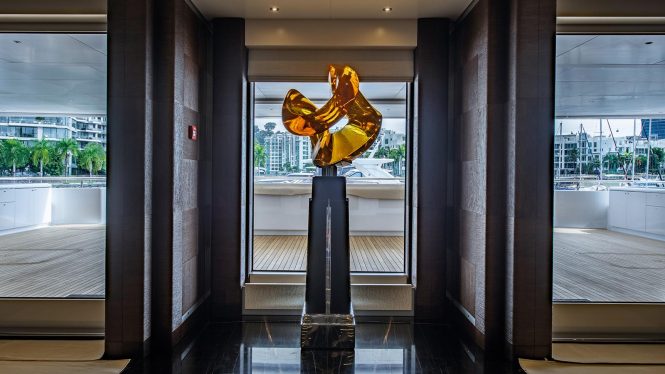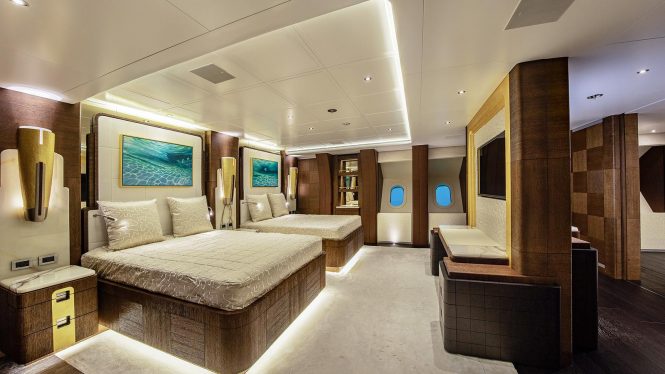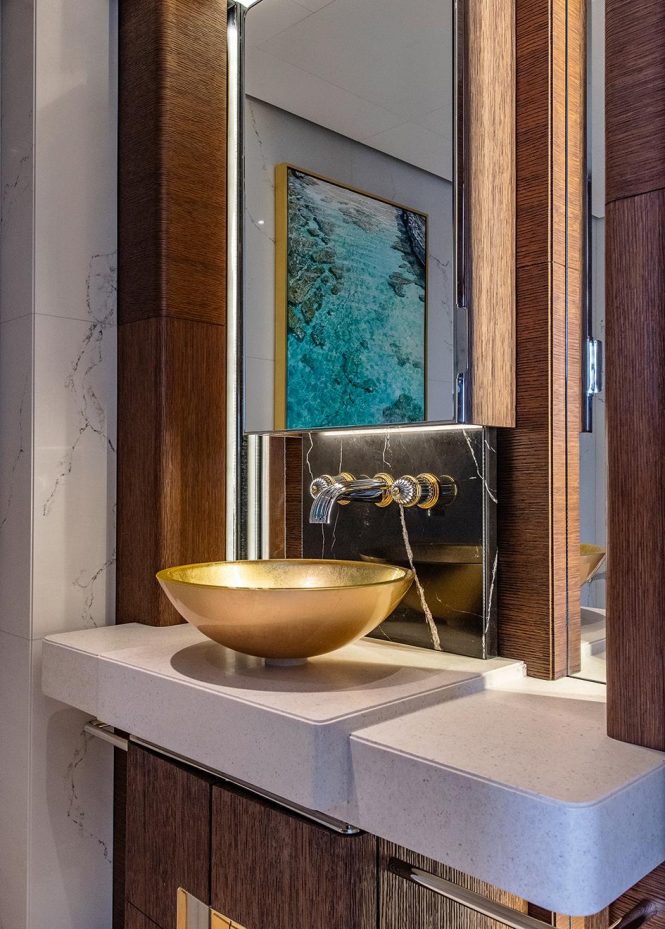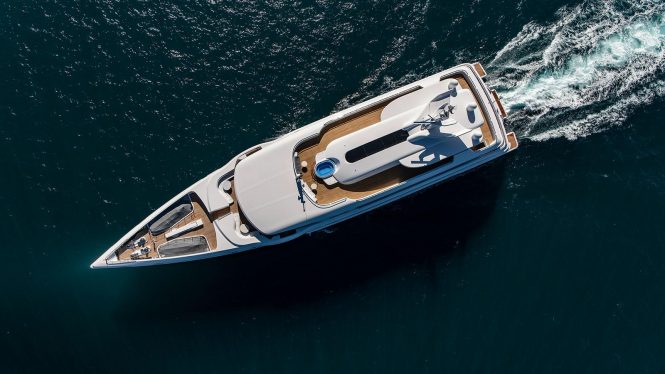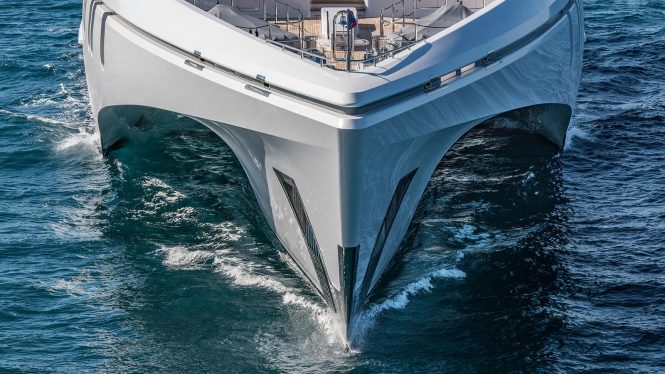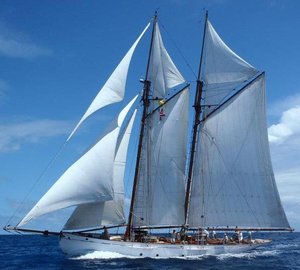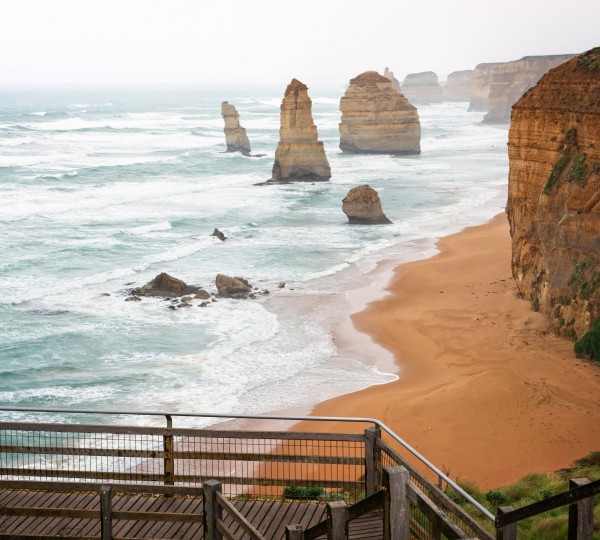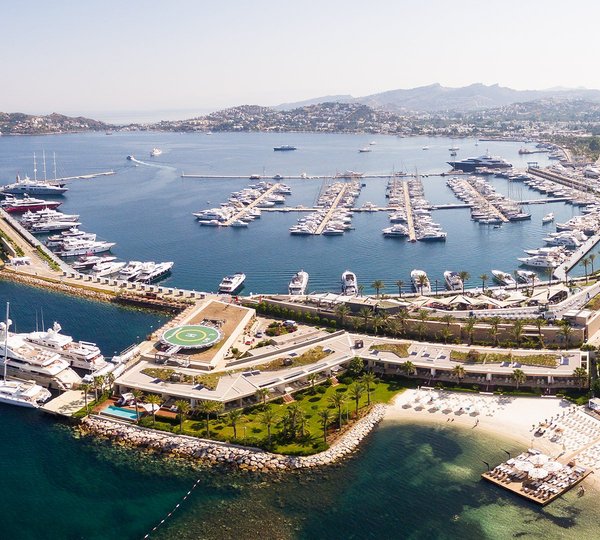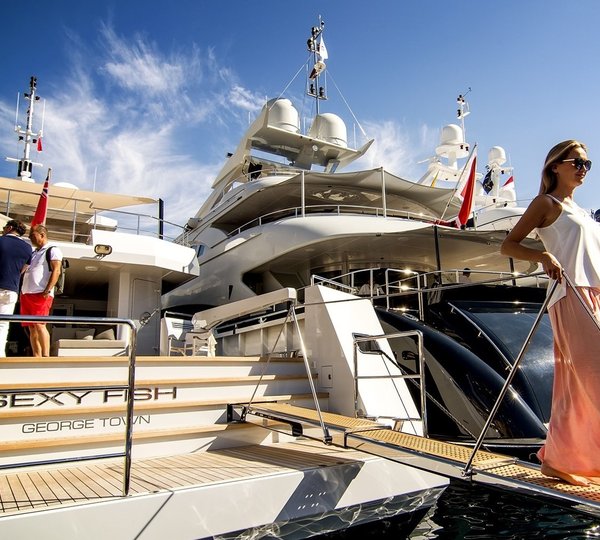Trimarans such as 84m/275.6ft luxury yacht WHITE RABBIT are a rarity within the luxury yachting industry, however the benefits of multiple hulls have been well recorded, providing greater stability and with top quality contemporary naval architecture, a smoother cruising experience with reduced noise and less of an environmental impact.
Billionaire WHITE RABBIT Owner Goh Cheng Liang is one strong proponent for trimarans: His previous 61.4m/201ft luxury yacht built by North West Bay Yachts Pty Ltd. Australia – also named WHITE RABBIT – was a trimaran delivered in 2005 and accommodated up to 16 guests and 16 crew.
He is in an excellent position to judge their benefits, having started with a monohull from Feadship in 1989 before owning a second monohull in 1995 also named WHITE RABBIT. In 2001 he changed to a catamaran before going for his first trimaran in 2005, the 61m/201ft predecessor to the current – and fifth – WHITE RABBIT.
A 51/167ft luxury support catamaran named CHARLEY followed suit in 2017 that has on board a grand piano in the main salon, a sheltered observation deck and touch-n’-go helipad. The most impressive features aboard CHARLEY however are her dive store with a decompression chamber and a sonar system for finding wreck dives. The accommodation provides for five guests over three en-suite staterooms, and a crew of 13 to ensure that everything runs smoothly on board.
Echo Yachts also built the latest WHITE RABBIT trimaran launched in 2018, and at the World Superyacht Awards 2019she was nominated for the Displacement Motor Yachts 2,000GTand above category, was a finalist in the Best Exterior Styling Motor Yachts 60m and Abovecategory at the Boat International Design & Innovation Awards 2019and won the Best Naval Architecture: Displacement Motor Yachtscategory at the same awards show.
M/Y WHITE RABBIT has a wide beam of 20m/65.6ft, which is 5m/16.4ft wider than most monohulls in this same size category. As a result she has a large interior volume of 2,940 GT, which is comparable to monohulls of 90m/295ft in size: Recently refitted 85.1m/279ft SOLANDGE weighs in at 2,899 GT, while 108m/354ft Benetti giga yacht IJE is not so far off with an interior volume of 3,367 GT.
Indoor socialising
When it came to creating the interior layout for WHITE RABBIT, Sam Sorgiovanni had practice with the previous smaller luxury trimaran. Owner Goh Cheng Liang provided a clear brief: The larger vessel was to be used by extended family encompassing multiple generations with the capacity for corporate use. The resulting accommodation sleeps up to 30 guests across 11 en-suite cabins consisting of 2 Master suites, 3 VIP staterooms and 6 other guest cabins. Each family member was consulted for their input on the accommodation and entertaining areas (totalling 1,200m²/12,916ft²), and the response was overwhelmingly ‘more of the same from 61-metre WHITE RABBIT, just on a larger scale’. The art deco styling of the smaller trimaran has also been transferred, albeit in a more subtle fashion, such as the wall sconces and the jellyfish-like light column at the main salon bar.
Brushed Tasmanian oak in a chequered pattern can be found throughout the decks and adds a welcoming touch to the elegant interiors designed to suit a formal event as much as family time together.
As the crew of 32 are on call around the clock, they are almost just as well catered for as the guests and have a massive mess and lounge on the main deck forward that has plenty of natural light and great views. Sorgiovanni requested the cabinetry and furnishings be custom made by Alia Yachts in Turkey following their quality collaboration on M/Y RUYA in 2016.
The open plan main salon places a more contemporary lounge to port, while to starboard the space is designed to suit the older generations. While there is a degree of privacy between the two spaces, there is still a connection that prevents separation altogether. Farther aft is the bar, games room and dining area. As there are no TVs in the cabins (except the Owner’s), the younger generations are not hidden away throughout their time on board and are instead engaging with the rest of the group.
A sweeping staircase leads from the main deck foyer to the upper deck, where the skylounge has a more cosy and intimate atmosphere after the expansive main salon. This media-focused room is furnished with a karaoke area and a baby grand piano. The guest accommodation placed upon this level enjoys excellent views through large yet more traditional windows that create a ‘viewing portal’ effect while maintaining guest privacy. Instead of an abundance of wardrobe space, guests have a bench to lay out their belongings, as those on board are expected to spend much of their time in the social areas and at each destination, using their cabins only for rest and the en-suite facilities.
The sundeck above provides another games lounge within the forward section along with a cinema fitted with chairs that shake with the on-screen action.
Life alfresco
Outside, the broad beam provides plenty of room for dockside events hosting up to 200 guests.
As a result of having three hulls there are three swim platforms, the centre on being the largest for sunbathing beside the water, while the side platforms have staircases for access to the main deck aft.
Both this area and the upper deck are designed for alfresco dining, while the foredeck is more suited to outdoor lounging with two circular drinks tables and plenty of seating for the whole group to watch the sunset or a local regatta. The bow section is used for storing the larger water toys and tenders, which are launched and retrieved using a Davit crane.
The sundeck is furnished with a spa pool and sunbeds, while to the aft, a large alfresco dining table is placed beneath the shade of an overhang.
The outdoor spaces seem sparse in comparison to the rich interior detail, yet this suits the family fine as they spend most of their time together conversing indoors, exploring their destinations or playing in the water.
Engineering
When it comes to on board comfort through engineering, trimarans provide a smoother on board experience during cruising, while at anchor and in bow-on weather when compared to monohulls of approximately the same displacement. It is only in stern-quartering seas that trimarans under-perform in comparison, and to combat this effect the naval architects used experience gained from the previous design of the 64m/209ft WHITE RABBIT trimaran to add solutions such as the four large Naiad fins around the centre hull. To reduce the roll, each hull was designed with significant flare and the Owner is able to choose the buoyancy in the outer hulls to match his comfort preference.
The three streamlined hulls also create less drag in the water and from this comes another advantage over single-hulled luxury yachts: Under typical cruising conditions trimarans use 40% less power, thereby reducing running costs as well as fuel consumption.
The interior arrangement needed to be modified on the later WHITE RABBIT trimaran as the Owner – who had a cabin in the centre hull where the majority of the engineering was also housed – wanted noise to be limited, and to reach this goal he gave Echo Yachts free reign to explore alternative solutions. As a result, recorded sound levels in the lower deck Master suite were at just 40db while cruising at 13 knots, and noise levels were even quieter on the decks above.
Four Caterpillar C32 generators of 940kW each and two C18 generators of 550kW each are installed on board and use a Kongsberg power management system. Only two gensets are required for a cruising speed of 12 knots, of which 25% (500kW) is used to run on board systems at the same time using 320 litres of fuel an hour. M/Y WHITE RABBIT has a transatlantic-crossing range of 5,000 nautical miles on just 166,200 litres of fuel. In comparison, SOLANDGE has a capacity of 222,000 litres.
The engineering team decided on diesel-electric propulsion with generators placed in the outer hulls to power STADT electric motors in the centre hull, where two Rolls-Royce variable pitch props are situated.

